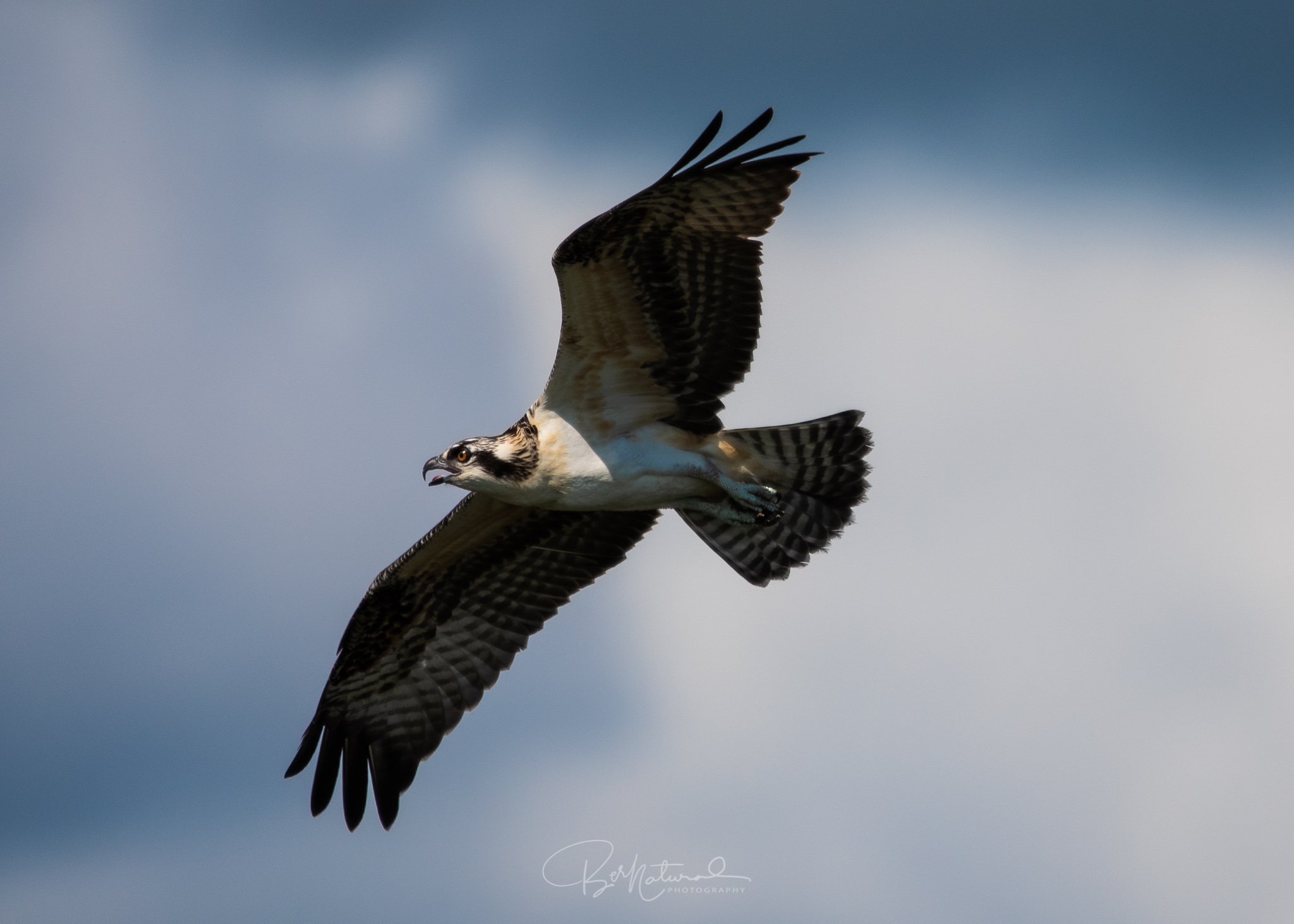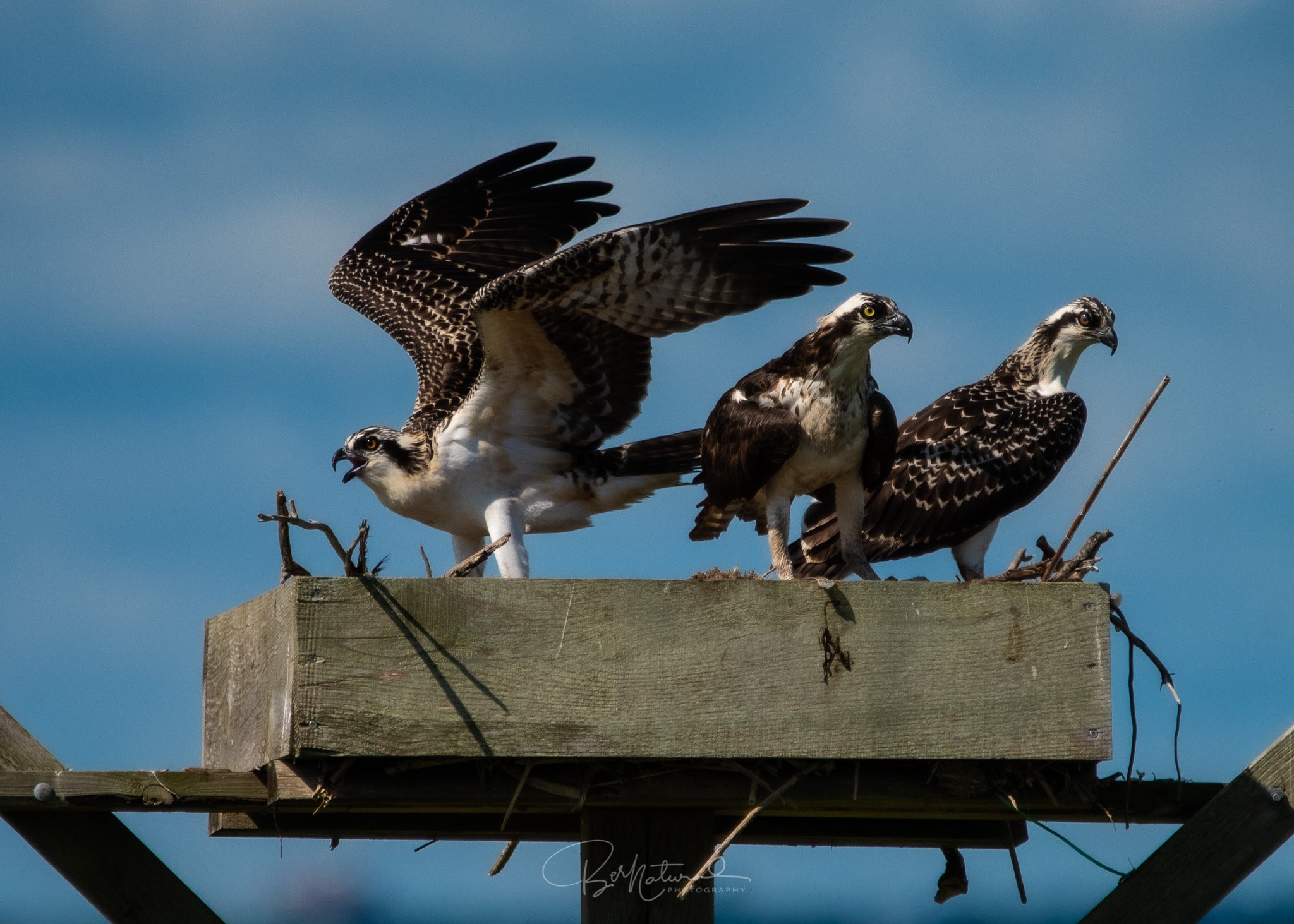
The Wonderful World of Ospreys
The osprey, often called the "fish hawk," is one of nature's most specialized hunters. Wih their distinctive white and brown plumage and piercing yellow eyes, these magnificent raptors have mastered the art of fishing in a way no other bird has.
Their reversible outer toe, sharp curved talons, and spiny foot pads are perfectly designed to grasp slippery fish. When they dive, they plunge feet-first into water, sometimes completely submerging themselves to catch their prey.
THE OSPREY
A Story of Recovery
In the 1950s and 1960s, osprey populations plummeted dramatically across North America. The widespread use of DDT and other pesticides caused their eggshells to become dangerously thin, leading to reproductive failure and a steep population decline.
90%
Population decline in some regions by the 1970s
1972
DDT banned in the United States and first nesting platform installed in NJ
2001
Nesting platforms installed nationwide.
Thanks to the ban on DDT, dedicated conservation efforts, and the installation of nesting platforms beginning in NJ and spreading through Minnessota and Wisconsin, osprey populations have made a remarkable comeback. Today, they are considered a conservation success story and evidence for us for what we can achieve when we decide to work with nature and each other.
Life Cycle & Facts
LIFESPAN
15-20 years
Average life span in the wild
EGGS
2-4 eggs
Typical size of clutch, incubating between 38-42 days
MIGRATION
160,000 km
Lifetime of distance traveled through seasonal migrations
FLEDGING
50-55 days
Time from hatching to young ospreys taking flight
NESTING
Same Nest
Ospreys return to the same nest every year. Adding to it each year.
DIET
99%
% of their diet is fish
Migration Patterns
Ospreys are fascinating long-distance migrants. North American ospreys travel thousands of miles between their breeding grounds in Canada and the northern United States to their wintering grounds in Central and South America. Some individuals make this journey solo, navigating by instinct alone.
Young ospreys remain in their wintering grounds for their first full year, only returning north to breed when they reach 3-4 years of age. This adaptation allows them to mature and develop the skills needed for successful breeding.
Recovery Platforms: Raising the Next Generation and Working Together to Recovery
Man-made nesting platforms have become crucial to osprey conservation, providing safe havens for these magnificent birds to raise their young
The Platform Solution
As natural nesting sites, such as tall dead trees, became scarce due to development and habitat loss, conservationists began erecting artificial nesting platforms. These structures, typically mounted on poles 15-25 feet high, provide ospreys with ideal nesting locations near water sources.
The platforms are designed with diameters of 4-6 feet, providing the birds with ample space to build their massive nests, which can weigh several hundred pounds after years of additions.
Observations
Most often, the male perched on a nearby branch to eat the head of his catch before returning to the nest. At times, the female left him to feed the young, but more often, especially when the chicks were this small, she stayed to tend to their hungry cries, feeding them and stealing a few quick bites herself before they settled.
Over time, nests can grow to sometimes weighing nearly 400 pounds as the pair adds new layers each season. Yet nature’s power is clear to them. Strong storms can tear these heavy nests from their perches, leaving the devoted pair to rebuild when they arrive to a literal empty nest in the Spring.
Dedicated Parents
Every day, for over 8 weeks, I got to watch them tend to their young. Both parents share the responsibility of raising their young. The female does most of the incubating and brooding, while the male is the primary provider, bringing fish to the nest whenever he hears the hungry mom’s recognizable demands for fresh fish.
Young ospreys are completely dependent on their parents for 8-10 weeks. During this time, they learn crucial skills: how to fly, hunt, and survive on their own before they’re ready to leave the nest.










